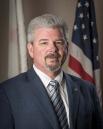Tree Mortality: Seeing is Believing
Watch a video about tree mortality at this link.
Seeing is believing as the old saying goes. Maybe that’s why tree mortality isn’t a bigger issue for more people. If you haven’t seen it for yourself, it’s hard to believe that 29 million trees have already died in our foothill and mountain counties, and many more will probably die. So, I urge you to watch the video that’s linked to this blog posting. In stark footage, it shows how drought and bark beetles are having a disastrous impact on our forests—especially Ponderosa Pines.
Warm dry conditions over the last several years have allowed the bark beetle population to explode. Stressed from drought, the trees can’t defend themselves from the onslaught of beetles. The loss of 29 million trees is devastating for the forest ecosystem and for the environment statewide. Fresno and Madera Counties are especially hard hit, but virtually every county in the Sierra has some tree loss and the beetles are continuing to spread. Some estimates say the death toll could easily double.
Tree mortality has several impacts. The dead trees can fall over, posing an immediate threat to homes, people and infrastructure. They drastically increase the potential for bigger and more intense wild fires. And the loss of these trees will have a dramatic impact on air and water quality.
If these dead trees burn, or simply decompose over time, they release thousands of tons of carbon into the atmosphere, potentially erasing much of the progress we’ve made in reducing carbon emissions from other sources. Governor Brown has earmarked $150 million in Cap and Trade revenue for a healthy forest initiative. And his May Revision to the budget includes $11 million more dedicated to tree mortality. Those funds can help the state and local governments remove some of the dead trees and begin looking at reforestation efforts. The loss of trees also has implications for water quality, because a healthy forest slows runoff and reduces erosion.
The dead and dying trees increase the threat of wildfire by creating a very heavy fuel load in the forest. Fires in the impacted areas are going to burn hotter and faster with all that fuel. In addition, falling trees can block access for firefighters and trap residents trying to get out. I’m worried that people are going to lose their lives because the fires are going to burn with more intensity.
Even without a fire, the dead trees pose an immediate local risk. Many of them are standing close to roads, homes, power lines, campgrounds or picnic areas. They could easily kill someone or damage infrastructure just by falling over. Counties are using up their emergency funds to remove these “hazardous trees” and they are just scratching the surface. Many homeowners can’t afford to remove the trees that threaten their homes and property. We have to find a way to help them, too.
Tree mortality is an ecosystem-changing event. The long-term impacts are going to be with us for many years to come and we can’t completely eliminate the short-term hazards. But there are steps we can take to reduce the risks. The Governor’s Tree Mortality Task Force is coordinating dozens of stakeholders to address this problem in the most efficient manner.
This is a high-priority issue for the Governor. The Cap and Trade funds he set aside for healthy forests in his budget proposal are essential to reducing the threats from tree mortality. But this is the budget season in California, and there are many competing priorities. Dealing with the ongoing loss of our forests needs to remain high on the list.












































